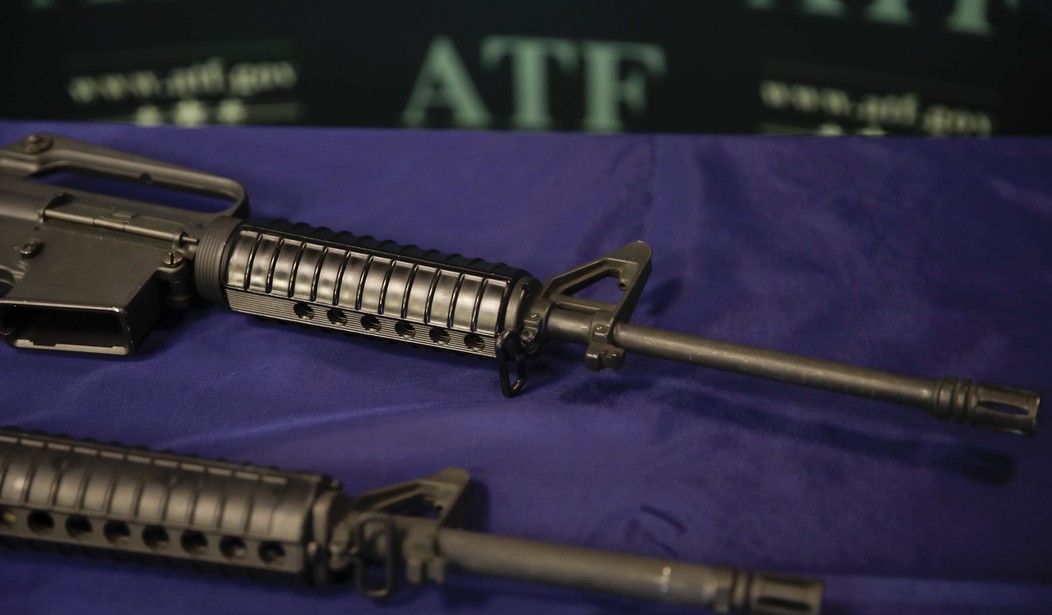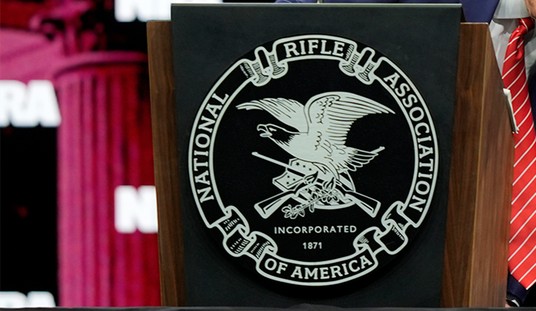“Ghost guns” have served the anti-gunners well, at least as a term. They’ve managed to gin up a lot of outrage for what is, for the most part, a non-issue. Unserialized, privately-produced firearms account for a tiny fraction of the firearms used in violent crime. In fact, they had to start including those with serial numbers rendered unreadable in the statistics just to make it look like it was even a hint of a problem.
Nonetheless, President Joe Biden and his ATF have created new rules regarding these guns.
However, as noted over at The Federalist, those rules were effective for about nine seconds.
The Biden administration and its allies are celebrating that President Joe Biden has now “banned ghost guns” by executive order. A “ghost gun,” as the gun control movement calls it, is a homemade firearm that does not have a serial number and is not known by the federal government to exist. Since the moment our country was founded, it has always been legal at the federal level to build a firearm for personal use, as long as the firearm manufactured is otherwise legal to own. As of August 24, 2022, a new federal regulation prohibits kits with all of the parts needed to build a gun from being sold to the public without a background check.
As the gun control movement describes it, America’s streets are now safe from the scourge of homemade firearms because companies cannot sell the kits to make these guns without the purchaser receiving them through a licensed gun store and undergoing a background check.
Their celebration was short-lived, however. As soon as the clock struck midnight and Biden’s new rule went into effect, retailers had already adjusted their inventory to comply with the new regulations. Biden’s ban on “ghost guns” lasted no longer than a minute.
…
It is easy to predict what sellers did the minute the clock struck midnight on August 24, 2022, and the ATF’s final rule banned these kits: The retailers broke up their kits and began selling the unfinished frames, jigs, drill bits, and parts as separate items. Retailers started requiring buyers to purchase all four of these items in separate orders. Some online retailers refused to sell all four items, instead forcing buyers to make separate purchases from different sellers so that no single seller could be accused of selling a “gun.”
And seriously, just who thought it would be any different?
These rules were put in place, but if there’s one thing the gun community is good at, it’s finding a way to adhere to the letter of gun control laws without adhering to the spirit of them.
And that’s a good thing.
In this case, though, there is much rejoicing around the new “ghost gun” rules, but absolutely nothing of substance has changed a bit. You can still buy all those components, still cobble your own handgun or rifle together, and still enjoy the process.
All that’s really happened is the ATF has made it a bit more of a pain in the butt to do so. That’s it.
But let’s also be real here, even if they’d somehow managed to end the sale of incomplete receivers forever, this is the age of the 3D printer, which can churn out a polymer receiver all on its own. People will build what they want to build and there’s really no chance of stopping that.
In fact, there never really has been. P.A. Luty proved that a long time ago. Luty didn’t even need the latest technology. He just needed a trip to the hardware store.
Banning “ghost guns” is one of those things that will play well with anti-gunners and the media (but I repeat myself here) but won’t actually accomplish anything. Those who wish to arm criminals will find a way to continue arming criminals. Those who want to build their own guns for lawful purposes, which is the majority who do so, will continue building their own guns.
Nothing has changed and nothing will change.
Again, that’s a good thing.







